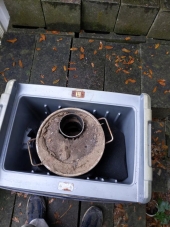
 5
5




Our inability to change everything should not stop us from changing what we can.




John Daley Bendigo, Australia The Enemy of progress is the hope of a perfect plan
Benefits of rainfall collection https://permies.com/t/88043/benefits-rainfall-collection
GOOD DEBT/ BAD DEBT https://permies.com/t/179218/mortgages-good-debt-bad-debt





Our inability to change everything should not stop us from changing what we can.





 1
1




Our inability to change everything should not stop us from changing what we can.












Mike Philips wrote:I figure a solar resistance heater would be 20% efficient (assuming the solar panel is outside the greenhouse).





 1
1




Our inability to change everything should not stop us from changing what we can.









Our inability to change everything should not stop us from changing what we can.
 1
1




 1
1




Learning slowly...
How permies.com works

 2
2




Our inability to change everything should not stop us from changing what we can.
 2
2




Learning slowly...
How permies.com works

 2
2




Our inability to change everything should not stop us from changing what we can.
 2
2





 2
2




Our inability to change everything should not stop us from changing what we can.
 2
2




Learning slowly...
How permies.com works

 2
2




Our inability to change everything should not stop us from changing what we can.





 1
1




Our inability to change everything should not stop us from changing what we can.
 1
1








Douglas Alpenstock wrote:Cool. That's serious juice man. I'm envious.
Have you looked into heating elements? I know you can get 12v, I suspect you can get 24v, and I can't think of a reason why you can't put them in series for 48v.
Dating app/site for off-grid and homesteaders: Permie Match

|
It's a tiny ad. At least, that's what she said.
Freaky Cheap Heat - 2 hour movie - HD streaming
https://permies.com/wiki/238453/Freaky-Cheap-Heat-hour-movie
|





